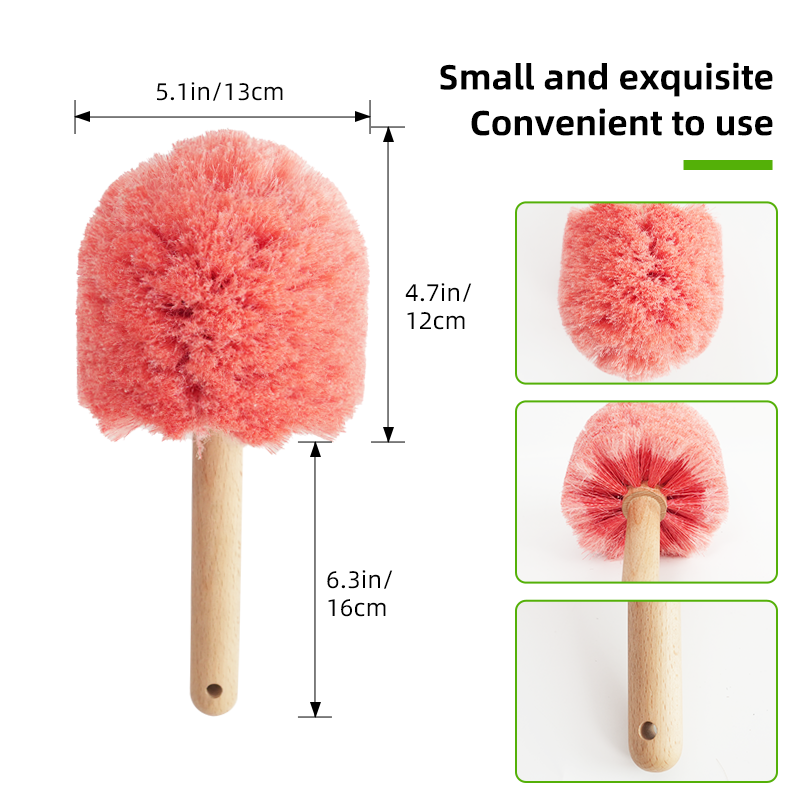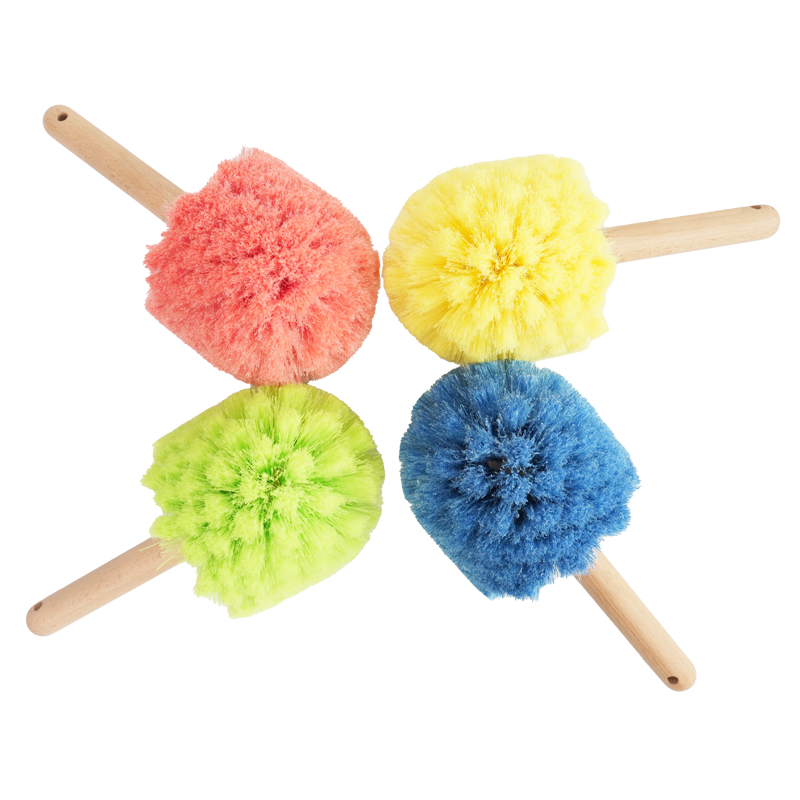Self-Producing Factory-Professional Manufacturer
The Ultimate Guide to Choosing the Right Bicycle Brush: Your Go-To Resource for Bike Maintenance
Oct 09,2025

The Ultimate Guide to Choosing the Right Bicycle Brush
Bicycles are not just modes of transport; they are investments that contribute to our health, enjoyment, and lifestyle. Maintaining a bike's condition requires the right tools, and one such essential tool is a bicycle brush. In this guide, we will delve into the nuances of selecting the perfect bicycle brush to ensure your bike remains in excellent shape.
Table of Contents
- Understanding Bicycle Brushes
- The Importance of Using a Quality Bicycle Brush
- Different Types of Bicycle Brushes
- Key Features to Consider When Choosing a Bicycle Brush
- How to Use a Bicycle Brush Properly
- Top Brands and Recommendations for Bicycle Brushes
- Maintenance Tips for Bicycle Brushes
- Frequently Asked Questions
Understanding Bicycle Brushes
Bicycle brushes are specialized tools designed to clean various parts of a bike, ranging from the frame and wheels to the drivetrain. They come in different shapes and sizes, tailored to reach specific areas and remove dirt and grime effectively. Having the right brush in your toolkit can significantly improve your bike maintenance routine.
What Makes a Bicycle Brush Unique?
Bicycle brushes are engineered with specific bristle types, shapes, and handle designs that cater to the unique needs of bike cleaning. Unlike regular cleaning brushes, bicycle brushes are designed to protect delicate components while effectively removing stubborn dirt. Here are the primary components of a bicycle brush:
- **Bristles**: Varying hardness levels, from soft to stiff, depending on the surface to be cleaned.
- **Shape**: Curved or straight handles to reach tight spots.
- **Size**: Ranges from small detail brushes to larger frame brushes.
The Importance of Using a Quality Bicycle Brush
Investing in a quality bicycle brush ensures effective cleaning while extending the lifespan of your components. Using inferior brushes can damage your bike's finish, leading to costly repairs. A good brush also makes the cleaning process easier and more efficient, allowing you to spend more time enjoying your rides.
Benefits of Regular Bike Cleaning
1. **Enhanced Performance**: A clean bike performs better, with smoother gear shifts and improved handling.
2. **Increased Lifespan**: Regular cleaning prevents rust and corrosion, prolonging the life of your bike components.
3. **Aesthetic Appeal**: A well-maintained bike looks better, enhancing your overall cycling experience.
Different Types of Bicycle Brushes
When choosing a bicycle brush, it's essential to understand the various types available to select the right tool for your needs.
1. Frame Brushes
These brushes have a wider head and are designed to clean the main frame of the bicycle. They are typically soft-bristled to avoid scratching the paint.
2. Detail Brushes
Detail brushes are smaller and designed to reach intricate areas like brake calipers, derailleurs, and other hard-to-reach spots. They often have stiff bristles to remove stubborn dirt without damaging the components.
3. Wheel Brushes
Wheel brushes are usually larger and designed specifically for cleaning rims and tires. They are built to handle tough dirt and grime that accumulates on wheels.
4. Chain Cleaning Brushes
These brushes feature a specific design tailored for cleaning the bike chain. They often come with multiple bristle types to remove dirt from different chain components effectively.
5. Sponge Brushes
Sponge brushes combine the scrubbing power of bristles with the gentleness of a sponge, making them ideal for cleaning painted surfaces without scratching.
Key Features to Consider When Choosing a Bicycle Brush
When selecting a bicycle brush, there are several key features to consider that will impact its effectiveness and usability.
1. Bristle Material
The material of the bristles is crucial. Nylon bristles are popular due to their durability and resistance to wear, while softer bristles may be better for delicate surfaces.
2. Handle Design
A comfortable, ergonomic handle is vital for extended use. Look for handles that offer a strong grip, especially if you plan to use the brush regularly.
3. Size and Shape
Choose a brush size and shape that fits your cleaning needs. Larger brushes cover more area but may not reach tight spots, while smaller brushes offer precision but require more effort.
4. Versatility
A versatile brush can be used for various cleaning tasks, reducing the need for multiple brushes in your toolkit. Some brushes come with interchangeable heads to adapt to different cleaning needs.
5. Cleaning Compatibility
Ensure that the brush you choose can be used with your preferred cleaning solutions. Some brushes are designed to work better with specific types of soaps or degreasers.
How to Use a Bicycle Brush Properly
Knowing how to use a bicycle brush effectively can maximize its cleaning potential. Here is a simple step-by-step guide:
1. Gather Your Cleaning Supplies
Before you start cleaning, gather all necessary supplies, including your bicycle brush, cleaning solution, bucket, and water.
2. Rinse the Bike
Begin by rinsing your bike with water to remove loose dirt and debris. This step helps prevent scratches during the brushing process.
3. Apply Cleaning Solution
Dilute your chosen cleaning solution in a bucket of water. Dip the brush into the solution, ensuring the bristles are well-coated.
4. Start Brushing
Begin with the frame, using gentle strokes to avoid damaging the paint. For areas like the chain and gears, apply more pressure as needed, ensuring all grime is removed.
5. Rinse Again
After brushing, rinse the bike thoroughly with water to remove any remaining soap or dirt.
6. Dry the Bike
Use a clean, soft cloth to dry your bike, preventing water spots and rust formation.
Top Brands and Recommendations for Bicycle Brushes
Selecting a reputable brand can make a significant difference in the quality of your bicycle brush. Here are some top brands recommended by cycling enthusiasts:
1. Park Tool
Park Tool is a well-known brand in the cycling community, offering a variety of brushes designed for specific tasks.
2. Finish Line
Finish Line produces high-quality cleaning tools and solutions, including brushes that cater to bike maintenance.
3. Muc-Off
Muc-Off is renowned for its innovative cleaning products and brushes, designed to make bike cleaning easier and more effective.
4. Pedro’s
Pedro’s offers a range of bicycle cleaning tools, with brushes that are both durable and effective for various bike components.
5. ProGold
ProGold focuses on lubrication and cleaning products, featuring brushes that assist in maintaining optimal bike performance.
Maintenance Tips for Bicycle Brushes
A bicycle brush requires care to remain effective. Here are some tips to prolong its lifespan:
1. Clean After Use
Rinse your brush thoroughly after each use to remove dirt and cleaning solution. This practice helps prevent bristle wear and maintains performance.
2. Store Properly
Store your brushes in a cool, dry place away from direct sunlight. Hanging them or placing them upright can help maintain their shape.
3. Inspect Regularly
Check your brushes regularly for frayed bristles or damage. Replace any brushes that show signs of wear to maintain effective cleaning.
4. Avoid Harsh Chemicals
Using harsh chemicals can degrade brush materials. Stick to mild soap and water for cleaning your brushes.
Frequently Asked Questions
1. How often should I clean my bike?
Cleaning your bike every two weeks is recommended, but this may vary based on usage and environment. If you ride in muddy or wet conditions, consider cleaning more frequently.
2. Can I use regular household brushes for my bike?
While you can use household brushes, they may not be designed for delicate bike components and could cause damage. It's best to use brushes specifically designed for bicycles.
3. What cleaning solution is best for my bicycle?
A mild soap solution or a dedicated bike cleaning product is ideal. Avoid using bleach or abrasive cleaners, as they can damage the bike's finish.
4. Can I wash my bike with a pressure washer?
While pressure washers can be effective, use them with caution. High pressure can damage delicate components, so it's better to use a gentle spray.
5. How do I know when to replace my bicycle brush?
If you notice frayed bristles, a damaged handle, or decreased cleaning effectiveness, it's time to replace your brush.
Conclusion
Choosing the right bicycle brush is essential for maintaining your bike's performance and aesthetic appeal. By understanding the different types of brushes, their features, and how to use and care for them properly, you can ensure that your bicycle remains in peak condition. Investing time in bike maintenance not only enhances your riding experience but also prolongs the life of your bike. With the right tools and knowledge, you can enjoy the open road with confidence, knowing your bicycle is well-maintained and ready for any adventure.
Hot Tags:
Contact Us
CEO: Alan
Email: alan@virostech.com
Phone: +86-15215693689
Sales Manager: Edith
Email: Edith@virostech.com
Phone: +86-15215693689









